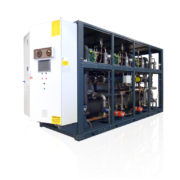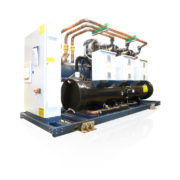After COP21 in December 2015, the world is moving toward concrete actions to keep global warming below 2/1,5 °C.
The most substantial solution to reach this target is to reduce the emission of greenhouse gases, such as HFCs. The phase-down and phase-out of hydrofluorocarbons represents at present one of the most cost-effective, short-term and fast-action strategy to reduce greenhouse gases in the atmosphere and prevent global warming.
According to the “United States, Canada, and Mexico Submit North American HFC Phase Down Amendment to the Montreal Protocol” a global phase-down of HFCs under the Montreal Protocol could avoid 1.1-1.7 GtCO2e of GHG emissions per year by 2030 with cumulative emission reductions of nearly 100 GtCO2e by 2050.
Several countries are committed to reduce their HFC consumption and emissions. We report here some of these actions and link to learn more about (source: “Pathway to adoption of a Global HFC Phase-Down”):
- Phase-down in the total amount of HFCs that may be produced and consumed, measured by total volume or CO2 equivalent, and progressively reduced over time.
Both the European Union with the F-Gas regulation and the Australian Government are moving this way.
- Prohibitions or bans on the use of HFCs in certain sectors or applications, starting with bans on the use of HFCs in new equipment, typically for all HFCs or for HFCs above a certain GWP threshold.
Several regulations around the world are forcing the phase-down of HFC, such as the EU F-Gas Regulation and the United States Significant New Alternatives Policy (SNAP).
- Market incentives for manufacturers or end users to transition away from HFCs. These may take the form of discouraging the use of HFCs either through environmental taxes or providing fiscal incentives to reward adoption of low-GWP technologies.
The Australian Ozone Protection and Synthetic Greenhouse Gas Management (OPSGGM) Act and the Japanese Revised F-Gas Law are moving this way.
- Mandatory licensing and reporting of production, imports and exports of HFCs
To import HFCs for example in Colombia, Macedonia, Montenegro, Serbia and Australia, importers need special approval by these countries.
- Refrigerant management provisions including bans on the venting or release of HFCs, periodic leak inspections or automatic leak detection devices in equipment, and requirements for HFCs to be recovered and recycled or reclaimed, or destroyed from systems during servicing or at end of life.
Canadian Federal Environmental Code provides special rules to prohibit HFCs release
- Management of HFC-23 by-product emissions by requiring destruction, chemical conversion or capture of HFC-23 produced as a by-product.
Chinese government is moving this way by funding part of costs for HFC-223 destruction.
Together with HFC phase-down, it is very important to move toward the use of low GWP refrigerants, which, combined with the abandon of HFCs, represent the best solution to reduce global warming.





